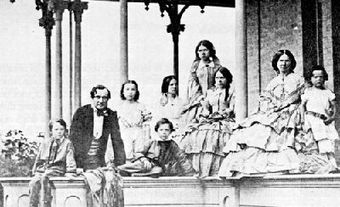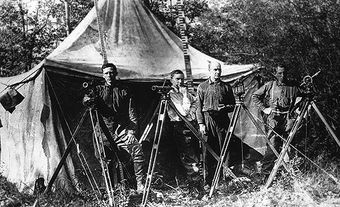
Aerodynamics
Aerodynamics is the branch of engineering concerned with gaseous fluids (usually air) in motion and, in particular, with the effects of this motion on rigid or flexible bodies. The forces acting on the surface of a body moving through air, or (what is the same thing) the pressure exerted by air flowing past a body at rest, are affected mainly by the shape and size of the body, the relative speed of the flow, and the density, viscosity and compressibility of the gas.
Viscosity is the ability of a flowing liquid or gas to develop internal shear stresses that resist flow. In air, viscous forces are generally small in comparison with inertia forces, a condition which leads to flow instability and turbulence. Thus, winds near the rough surface of Earth are generally turbulent, as is the flow in the thin boundary layer next to the skin of an airplane in flight. The problem of turbulence has never been completely resolved although, for most engineering purposes, its effects are reasonably predictable.
The compressibility of air determines the speed of sound or the speed at which pressure changes are transmitted through the flow field. The speed of sound is about 340 metres per second at sea level, 296 m/s in the stratosphere. If the speed of a body exceeds the speed of sound, the pattern of flow changes drastically and pressure waves tend to pile up into shock waves. The Mach number is the ratio of the body speed to the speed of sound. The design of efficient aircraft shapes for flight at transonic and supersonic speeds (Mach number near or greater than 1) remains one of the most challenging problems in aerodynamics.
Viscosity and compressibility are the most troublesome factors in theoretical aerodynamics and the steady development of aerodynamics during this century has been possible only through a close association between experimental and theoretical research. The main laboratory tool of the aerodynamicist, the wind tunnel, is a specially designed tube or duct in which air is made to flow under precisely controlled conditions.
Many of the engineering departments in Canadian universities have small- or medium-sized tunnels that are used for various research purposes. Large, general-purpose wind tunnels (suitable for investigation of aerodynamic design problems of aircraft and road vehicles, and the testing of large-scale models of engineering structures) typically cost tens of millions of dollars to design and build, and are comparatively rare. The largest tunnels in Canada are at the National Research Council, Ottawa: one is capable of speeds up to about 55 m/s and has a test section 9 metres square; another, with a 1.5 metres square test section, is capable of speeds up to 4 times the speed of sound.
The design of large wind tunnels is a highly specialized field in which one Canadian consulting engineering firm, DSMA International, has developed a worldwide reputation. DSMA's engineers have designed and supervised construction of many tunnels for automotive research and high- and low-speed aircraft development in North America, Europe and Asia.
The needs of aircraft design have prompted many advances in aerodynamics. For example, de Havilland Aircraft of Canada Limited have designed a famous line of STOL (short-takeoff-and-landing aircraft): the de Havilland Beaver, Otter Twin Otter, Dash 7 and Dash 8. De Havilland's success has resulted, in part, from the company's steady progress in design of high-lift wing flap systems and of means of maintaining precise control at unusually low flying speeds.
However, the applications of aerodynamics extend far beyond the needs of aeronautics. For example, the University of Western Ontario pioneered development of a specialized wind tunnel, with a very long test section, to model the turbulent characteristics of natural winds over Earth's surface. It has been used to check the design of large structures, including some of the tallest buildings in the world.
The universities of British Columbia and Moncton and a private consulting firm, Morrison Hershfield Ltd, in Guelph and Edmonton, all have tunnels of this type for the investigation of such problems as bird flight, pesticide-spray diffusion and snow drifting. NRC's large tunnels have been used to measure pressures and aerodynamic forces on downhill skiers, cars, high-rise buildings, model ships and trains, a flexible stadium roof, an offshore oil platform, snowmobiles, motorcycles and parachutes, as well as on nearly all the aircraft designed in Canada. NRC aerodynamicists have also revived a forgotten French invention: the vertical-axis wind turbine (VAWT), which looks like a large egg-beater. See also Wind Energy.

 Share on Facebook
Share on Facebook Share on X
Share on X Share by Email
Share by Email Share on Google Classroom
Share on Google Classroom


